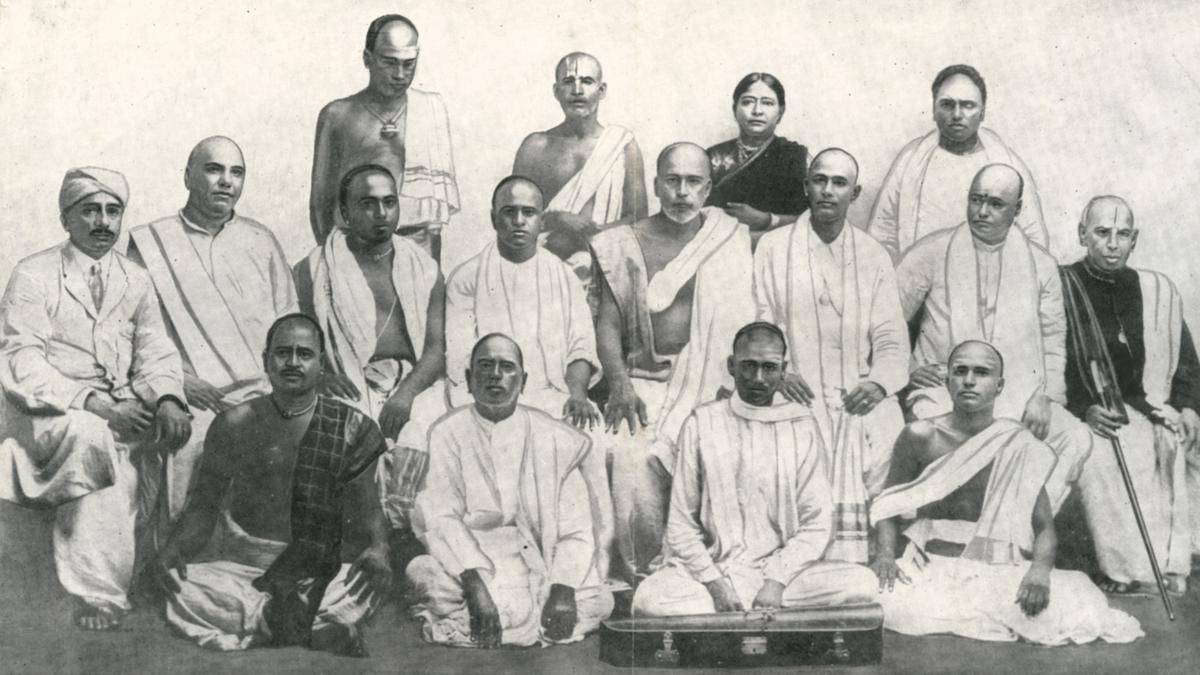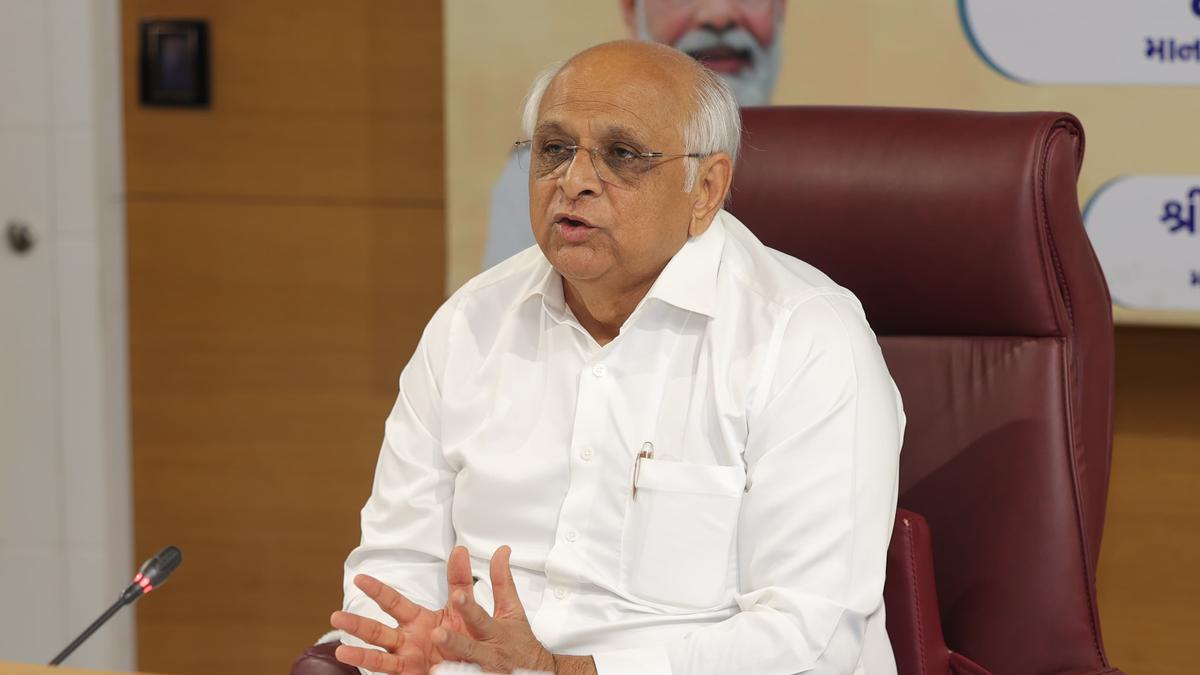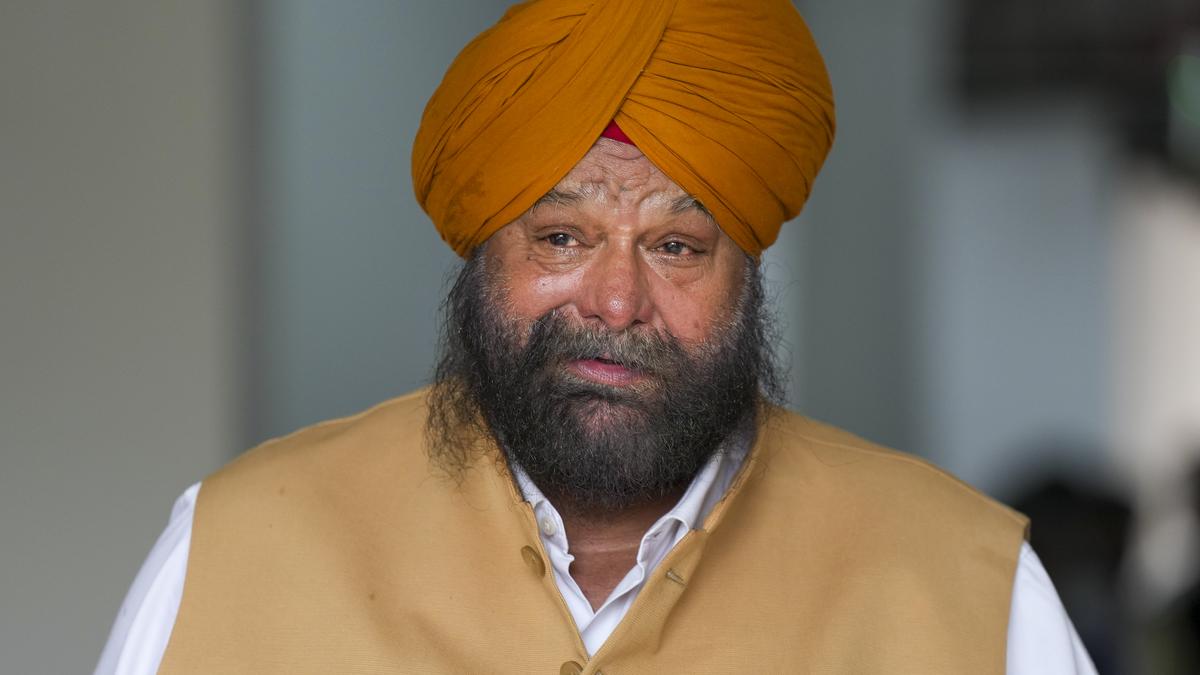As you turn the pages, you are drawn to a detailed study on T. Janakiraman’s mastery in music and its reflection in his works. This is followed up with an appreciation of his scholarship by Lalgudi Jayaraman as it appeared in a Tamil magazine. Enjoyable segments of T. Janakiraman’s novels, Marappasu and Mogamul are peppered throughout the book. The article on Konerirajapuram Vaidyanatha Iyer by M. Vaidyanathan (1936) has a strong and healthy dose of humour. The encounter between Konerirajapuram Vaidyanatha Iyer and Fiddle Krishna Iyer is a thought-provoking one. These and more such anecdotes and pieces make the book Parivadini Isai Malar (Volume 1) an interesting read. The book is a compilation of new and published articles.

Legendary musician M. Balamuralikrishna, whose distinct approach to every facet of his art is highlighted in this volume.
| Photo Credit:
The Hindu Archives
En Sangeetha Ninaivukal by S. Sivakumar, who has also edited this volume, is a musical journey by itself. His recollections of the well-known and unsung musicians are heart-warming. His piece on M. Balamuralikrishna elaborates the legendary vocalist’s distinct approach to every facet of his art. It also highlights how his persona was as unique as his music. The piece also refers to Veena Gayatri and talks about a station master with a passion for Carnatic music. This piece, in a way, is dedicated to every rasika, who goes out of the way to listen to their favourite artistes. This is also what made the station master face departmental action.
Sivakumar has paid rich tributes to Tiruvaiyaru Chellam Iyer, who is referred to as an encyclopaedia on music and musicians, and to Kannan, who started the trend of bringing out the music concert guide during the December Season.
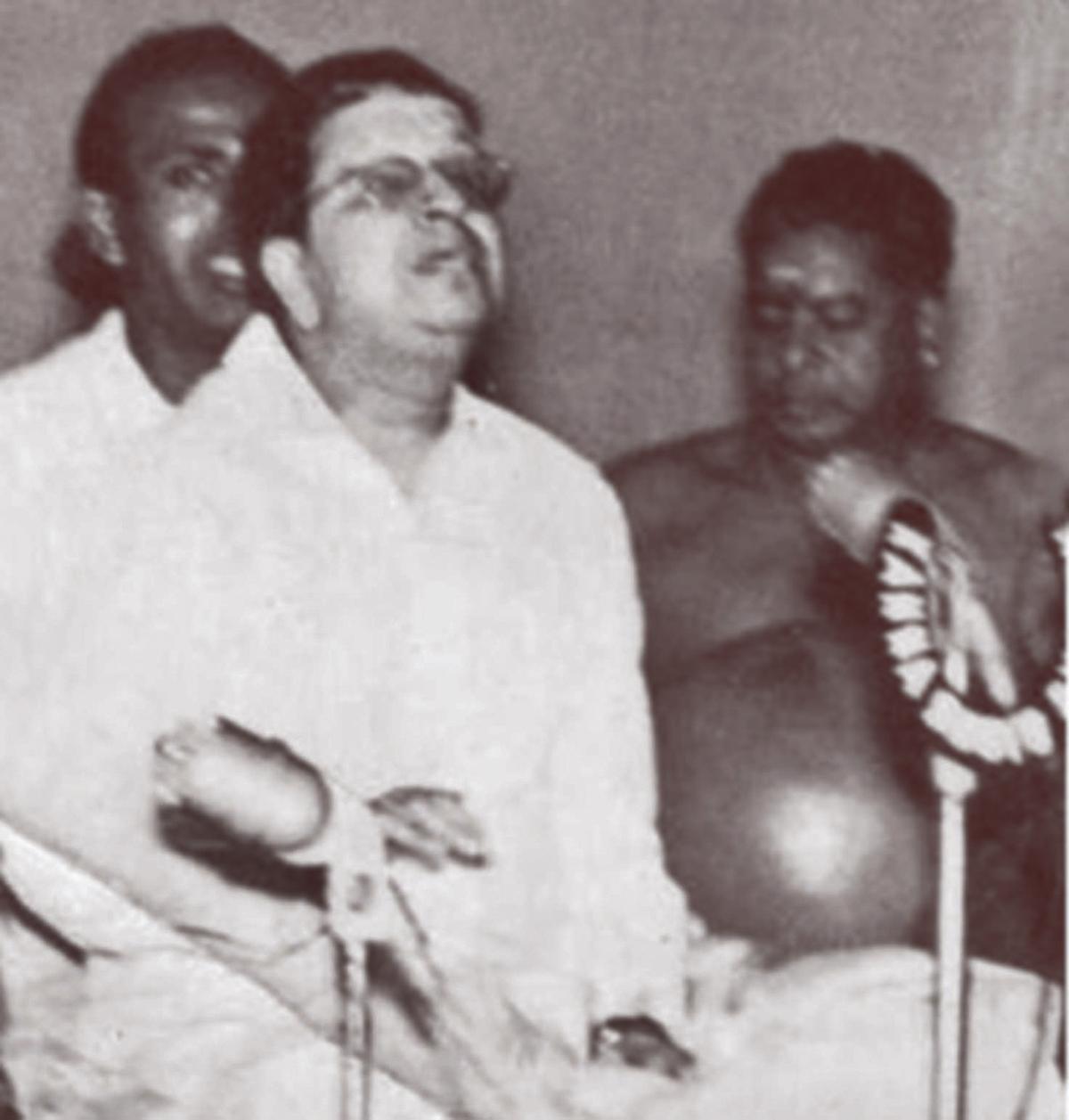
Madurai Mani Iyer during a concert.
| Photo Credit:
The Hindu Archives
An especially absorbing write-up on Madurai Mani Iyer’s music by S. Nilakantan, son of violin maestro Thiruvalangadu (Suswaram) Sundaresa Iyer, throws light on the bond between the two legends. Along with it comes a short but gripping excerpt from Kothamangalam Subbu’s Thillana Mohanambal , wherein the author brings out the grandeur of the Mallari by a group of nagaswaram artistes to the accompaniment of the great Ammappettayar’s thavil.
Recollecting the past
Tiger Varadachari’s reminiscences of musicians broadcast on AIR Tiruchi in the 1940s shed light on an era that shaped Carnatic music and laid the foundation for the future generation. He speaks of Thachur Singarachariar, Veena Nilakanta Sastrigal, Mutthayalpettai Tyagarayar, Muthuswami Thevar, Ghatam Devarajan, Morsing Govindarajulu, Chennai’s nagaswaram artistes Parthasarathy and his son Narayanaswamy, the famous Nadhamuni Band and Clarinet Appayi.
That P.S. Narayanaswamy had translated the original Malayalam biography of Swati Tirunal into Tamil is a revelation to me. An abridged version of the foreword written by Semmangudi Srinivasa Iyer finds a place in this book.
Sujatha Vijayaraghavan’s lively recollection of the chamber music concerts by visiting Carnatic musicians during her Delhi days is engaging.
The book also carries an interesting piece on Mysore Vasudevachar.
| Photo Credit:
The Hindu Archives
Another fascinating piece is Mysore Vasudevachar’s recollection (from the book The Artists Whom I Have Met written in the 1950s) of Kempe Gowda, who learnt music along with him under Patnam Subramania Iyer at Tiruvaiyaru.
Lalitharam, founder of Parivadini, has written an absorbing piece on Dilruba artiste Angamali Jose. An essay by G.K. Seshagiri (1939) is like a thesis on the Natya Shastra .
The famous writer R.K. Narayanan was also a music lover. The Tamil translation of one of his humorous pieces about attending a music concert in a makeshift pandal will leave readers in splits. Gopulu’s illustration accompanying the piece enhances the humour.
There are articles such as the one on harikatha exponent Saraswati Bai, which reflect the societal condition of the time. Similarly, Naradar Srinivasa Rao’s article paints a gloomy picture of the world of dance in the 1940s.
To Kalki’s review of Kallidaikkurichi Ramalinga Iyer’s concert, which appeared in Ananda Vikatan in May 1934, a counter review by Innisai on the same concert appeared in Manikodi, heralding a musical war. Thi. Ja. Ra’s article titled ‘Rights of a rasika’ presents some delightful points. The abridged version of the conversation between Pt. Vishnu Narayan Bhatkhande, an authority on Hindustani music, and Subbarama Dikshitar, an authority on Carnatic music, is as interesting as it is illuminating.
Mutual respect
Harikesanallur Muthiah Bhagavatar along with Palghat Mani Iyer helped two young enthusiasts learn the mridangam.
| Photo Credit:
GANESAN V
Thaadi Vaadhyaar (pen name of S. Sivakumar) has brought out the competence of mimicry artiste Thiruvisainallur Vikatam Ramasami Sastrigal, who could perform a vocal concert along with vocalisation of the sounds of the mridangam, ghatam, kanjira and konnakol. Thaadi Vaadhyaar has also written about how Harikesanallur Muthaiah Bhagavatar and Palghat Mani Iyer helped two young enthusiasts learn the mridangam. The book contains tributes to Muthaiah Bhagavatar by Ku Pa Rajagopalan, and to Pudukkottai Manpoondia Pillai by mridangam legend Palani Subramania Pillai. Lata Mangeshkar’s letter to ‘Gemini’ Vasan on K.B. Sundarambal’s music and performance in the movie Avvaiyar shows how artistes praised each other’s work.
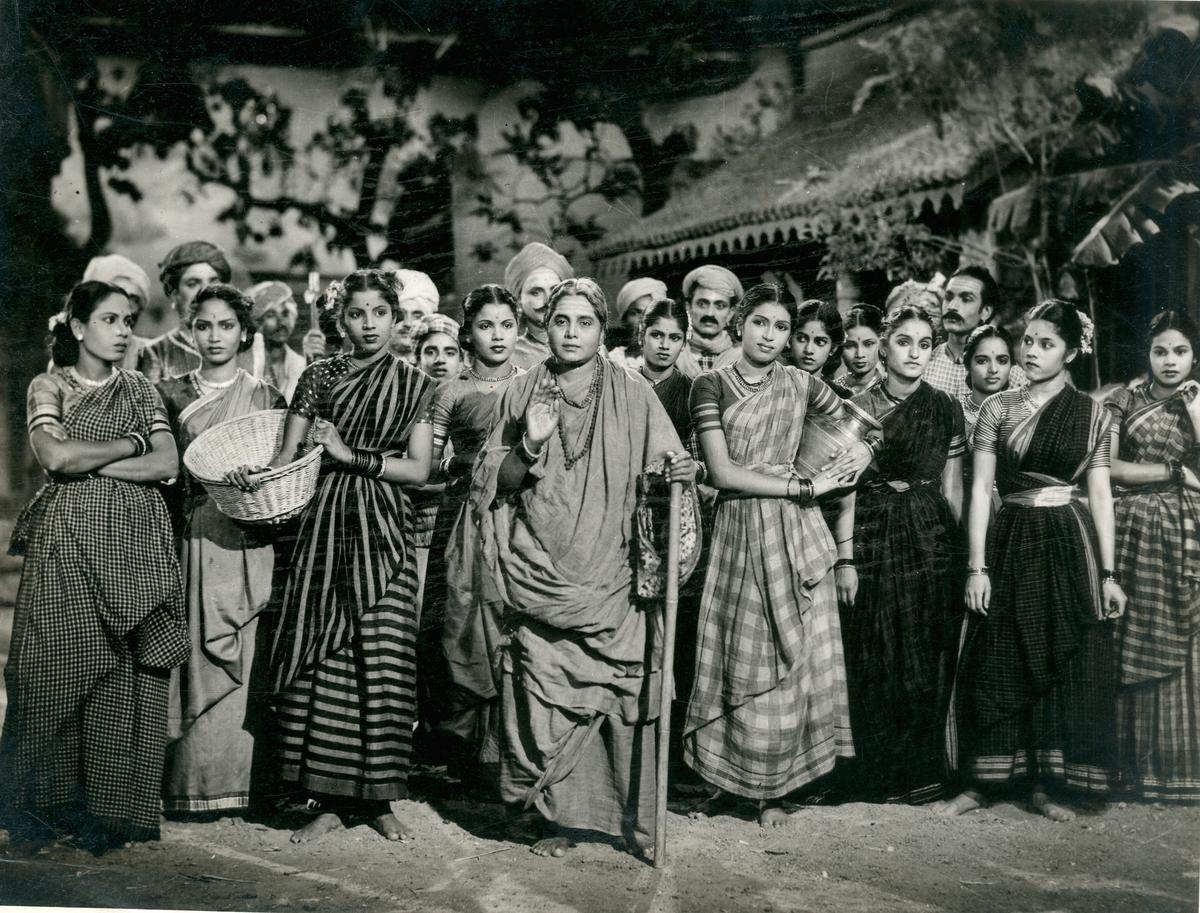
K.B. Sundarambal (centre) in a scene from Gemini Vasan’s Avvaiyar.
| Photo Credit:
The Hindu Archives
SVV’s article ‘Porumai Illaa Kaalam’ — an era without patience — compares the past with the present. Two articles by Y. Mahalinga Sastri in Manipravalam (Sanskritised Tamil) are certainly worth a read. S.G. Kasi Iyer’s tributes to his younger brother S.G. Kittappa, published in 1968, brings out several aspects of the latter’s musical journey. A few titbits fit well in this collection. One such is that of musicologist Prof. Sambamurthi accompanying on the violin at the Thevaram-Thiruvachagam session by Thamizhisaivanar Sa. Sundara Odhuvar. It was at the wedding of the daughter of Marai Malai Adigal, the founder of Tamil linguistic Purism.
The second volume of this 224-page compilation will be launched soon.
Published – June 06, 2025 03:49 pm IST
